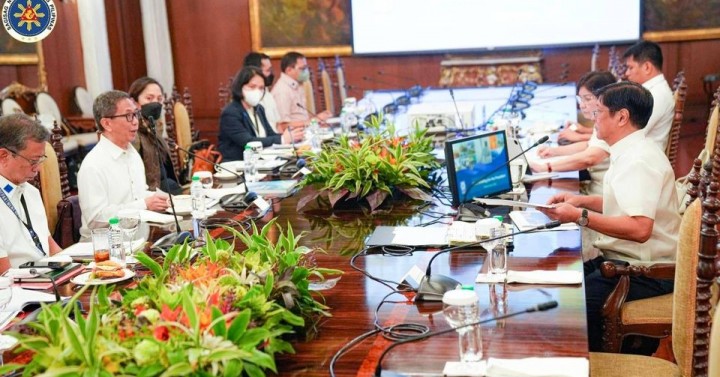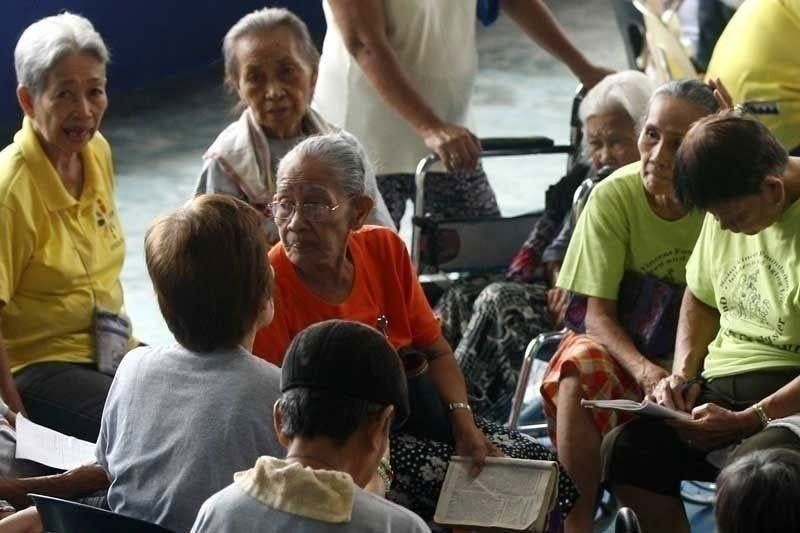
MANILA – Malacañang on Wednesday announced that President Ferdinand R. Marcos Jr. has approved the Department of Energy’s plan to explore and develop the country’s offshore wind (OSW) potential as a source of clean and sustainable energy.
This, after Marcos headed a meeting with DOE officials at Malacañan Palace in Manila on Wednesday morning to talk about “immediate and medium-term” plans to improve the energy sector.
“In a meeting at the Malacañan Palace on Wednesday, President Marcos instructed DOE Secretary Raphael P.M. Lotilla and other energy officials to move forward with the agency’s offshore wind energy production initiatives,” Undersecretary Cheloy Garafil, officer-in-charge of the Office of the Press Secretary (OPS) said in a statement.
During the meeting, Garafil said the DOE also made a proposal to create an Offshore Wind Development and Investment Council that will serve as a one-stop shop for OSW developers.
According to Garafil, Marcos supported the proposed creation of the council that will be composed of relevant government agencies, but stressed that the DOE should oversee the regulatory functions to streamline coordination and simplify the approval process.
“It should be the Department of Energy [which] should be talking with the OSW developers, in consultation with the council, of course. It has to be led by the DOE,” Marcos, as quoted by the OPS, said.
Lowering electricity prices
Marcos reiterated his resolve to work for lower electricity tariffs during a media interview aboard the presidential plane en route to Cambodia.
Marcos stated that he met with the DOE officials to discuss the “short-term, medium-term, and long-term” energy requirements in the country.
“We spent a long time talking about how to bring down the prices,” he said, noting that the DOE found a way to rationalize power supply.
Marcos also stated that discussions with local cooperatives are ongoing to talk about how “they can offer power at the cheapest price feasible.”
According to the World Bank’s OSW Roadmap, the Philippines has the capacity to deploy 40 Gigawatts of OSW electricity by 2050.
Based on the data presented by the DOE to Marcos, there are currently 42 approved offshore wind contracts with an indicated capacity of 31,000 Megawatts (MW).
‘Strong interest’ of Private sector
Likewise, the DOE noted the “strong interest” from the private sector, particularly from countries considered “leaders in offshore wind technology” such as Denmark, Norway and the United Kingdom.
“This is more than enough to cover the 500,000 MW projected peak demand the country will require by 2040 based on DOE’s medium to long-term power outlook,” Lotilla told the President.
Lotilla stressed that the power that will be created through OSW projects would be used to help the country meet its energy needs, as well as to produce alternative fuels, such as Green Hydrogen.
Garafil, citing the DOE report, stated that hydrogen may be converted into ammonia, which is a primary component in the production of industrial fertilizers used in agriculture.
According to the DOE, hydrogen may be converted into ammonia, which is a primary component in the production of industrial fertilizers used in agriculture.
The DOE signed a memorandum of understanding in 2021 with Australia’s Star Scientific Ltd. and Japan’s Hydrogen Technology Inc. to explore the potential of hydrogen as a source of energy for the Philippines in the future.
Contingency plans
The DOE also presented to Marcos its November 2022 to December 2023 outlook, according to Garafil, which showed that power reserves in Luzon may fall below ideal levels, given the continued shutdown of the Ilijan Power Plant in Batangas City, which has a total capacity of 1,200 MW.
“As a contingency, the energy department proposes to run the Ilijan Power plant, a dual-fuel power station in Ilijan, Batangas City, using diesel fuel to produce 420 MW, as well as implement the Interruptible Load Program,” Garafil said.
The DOE and concerned government agencies are closely coordinating to address the delays in the National Grid Corporation of the Philippines’ (NGCP) transmission line projects to free up power capacity for 2023, Garafil added.
The DOE, she said, would also release “short-term” action plans that will serve as guide of the energy sector for 2022 to 2024, pending the release of the Philippine Development Plan (PDP) 2023-2028.
The DOE has also created the Philippine Energy Plan 2020-2040, a 20-year plan that comprises electricity sector initiatives and projects aimed at ensuring long-term, stable, secure, adequate, accessible, and affordable energy.
The 20-year plan calls for a 35 percent share of renewable energy in the power generation mix by 2030 and a 50 percent share by 2040.
In his first State of the Nation Address delivered on July 25, Marcos underscored the need to prioritize clean energy and tap natural gas and nuclear power to meet the Philippines’ energy demands.








Artificial intelligence creates content for the site, no worse than a copywriter, you can also use it to write articles. 100% uniqueness :). Click Here:👉 https://stanford.io/3FXszd0
Artificial intelligence creates content for the site, no worse than a copywriter, you can also use it to write articles. 100% uniqueness :). Click Here:👉 https://stanford.io/3FXszd0
👉 $5,000 FREE EXCHANGE BONUSES BELOW 📈 👉 PlaseFuture FREE $3,000 BONUS + 0% Maker Fees 📈 + PROMOCODE FOR NEWS USERS OF THE EXCHANGE 👉 [M0345IHZFN] — 0.01 BTC 👉 site: https://buycrypto.in.net Our site is a secure platform that makes it easy to buy, sell, and store cryptocurrency like Bitcoin, Ethereum, and More. We are available in over 30 countries worldwide.